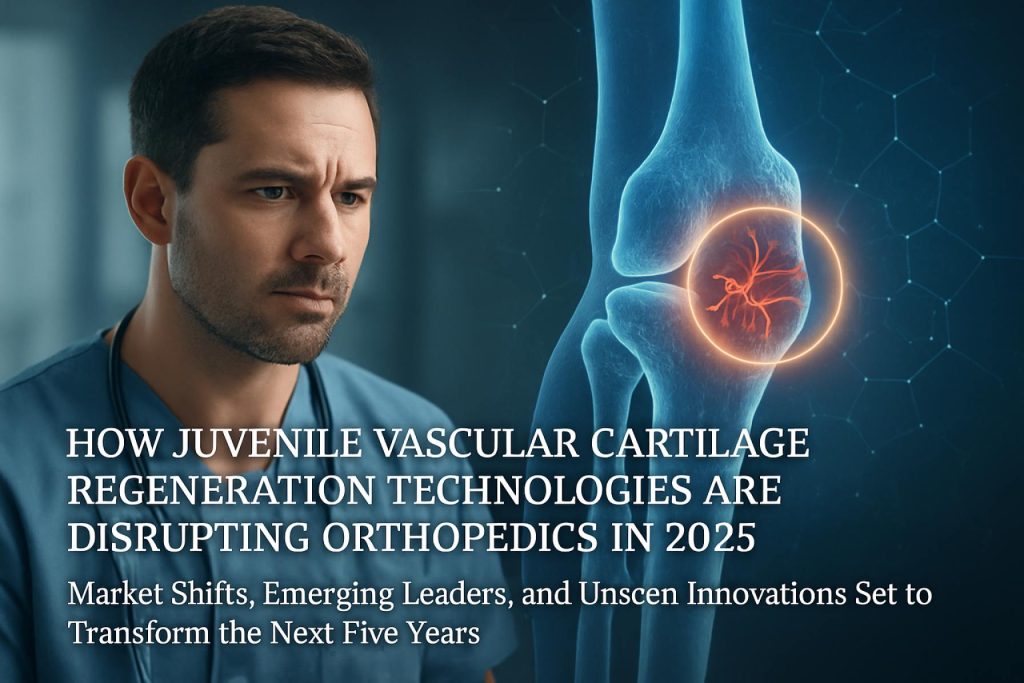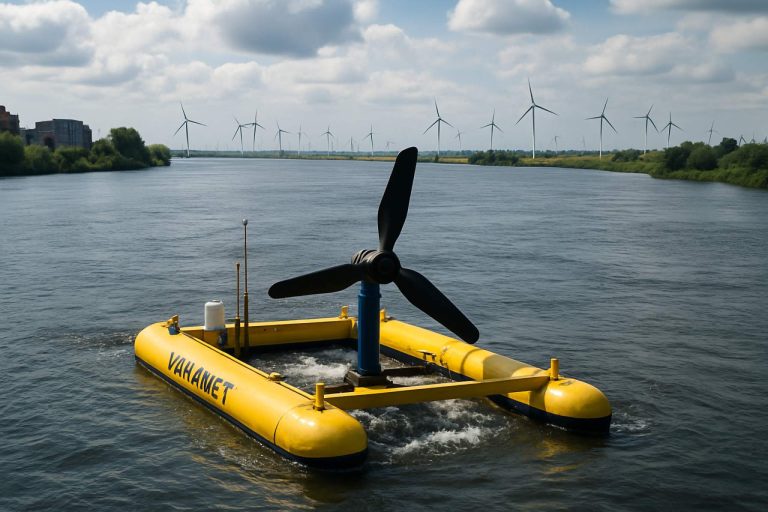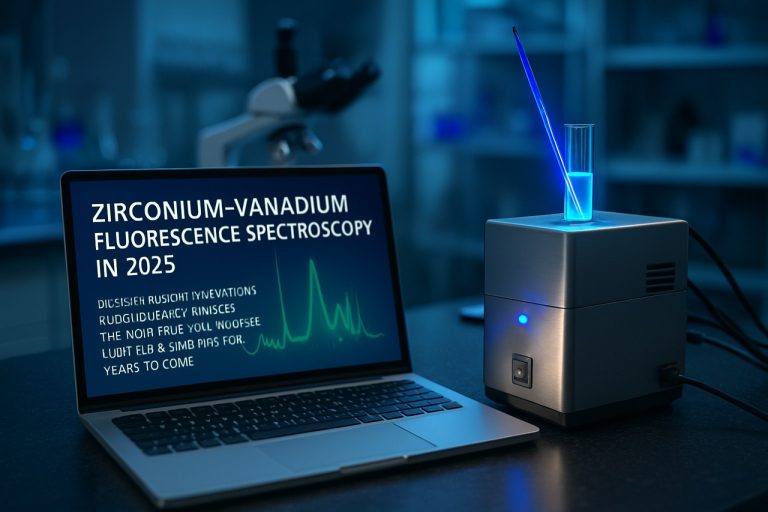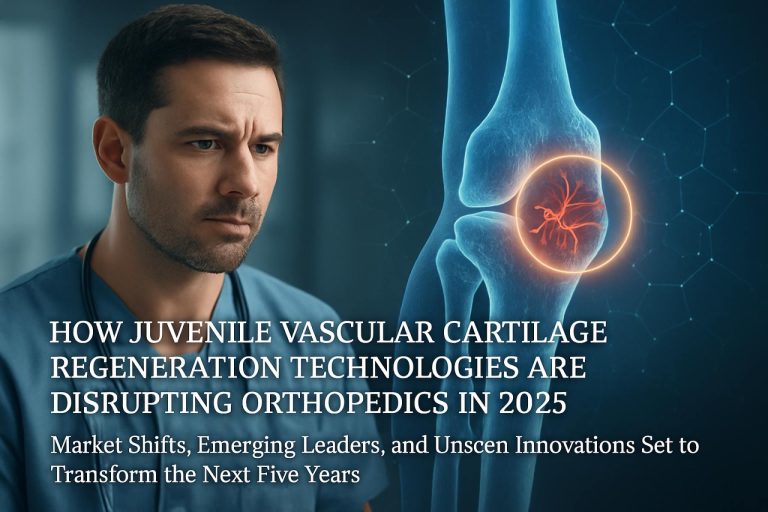
Juvenile Vascular Cartilage Regeneration: 2025’s Breakthroughs & Next-Gen Solutions Revealed
Table of Contents
- Executive Summary: Key Trends and Market Drivers in 2025
- Overview of Juvenile Vascular Cartilage Regeneration Technologies
- Pipeline Innovations: Leading Companies and New Entrants
- Market Size, Growth Projections & Forecast (2025–2030)
- Technological Advances in Scaffold Design and Cell Sourcing
- Regulatory Landscape and Reimbursement Pathways
- Clinical Trial Updates and Real-World Outcomes
- Strategic Partnerships, M&A, and Investment Trends
- Challenges: Scalability, Safety, and Ethical Considerations
- Future Outlook: Disruptive Opportunities and Competitive Landscape
- Sources & References
Executive Summary: Key Trends and Market Drivers in 2025
In 2025, the landscape of juvenile vascular cartilage regeneration technologies is experiencing marked advancements, driven by a confluence of innovations in tissue engineering, regenerative medicine, and biomaterial sciences. The current wave of development is focused on harnessing the biological potential of juvenile chondrocytes and leveraging sophisticated scaffold designs to address the unique challenges of pediatric cartilage repair, particularly in vascularized regions where conventional avascular cartilage solutions are insufficient.
A central trend is the adoption of cell-based therapies utilizing juvenile allogeneic cartilage, which offers superior proliferative and regenerative properties compared to adult tissue. Companies such as Vericel Corporation have reported enhanced outcomes using juvenile chondrocyte-derived products for cartilage repair in pediatric and adolescent populations, with early 2025 clinical data indicating improved integration and durability of regenerated cartilage. These therapies are complemented by the refinement of minimally invasive surgical techniques, allowing for precise delivery and integration of engineered constructs.
Another key driver is the evolution of biomaterial scaffolds. Innovations in bioresorbable polymers and composite hydrogels are enabling the development of scaffolds that mimic the mechanical and biological environment of native juvenile cartilage, facilitating vascularization and integration. Smith+Nephew and Arthrex, Inc. are among the companies advancing scaffold technologies, with new products entering the pipeline that feature tunable porosity and bioactive coatings to promote cell adhesion, proliferation, and neovascularization in juvenile patients.
Regulatory momentum is also steering the sector forward. The U.S. Food and Drug Administration (FDA) and European Medicines Agency (EMA) have both issued updated guidance in 2024 and 2025 to accelerate the approval pathways for pediatric regenerative therapies, provided robust safety and efficacy data are presented. This regulatory clarity is encouraging further investment and collaborative research, with industry consortia and academic partners launching multi-center trials to validate new cartilage regeneration platforms.
Looking ahead, the market is expected to see continued growth through 2025 and beyond, as ongoing clinical trials report positive outcomes and next-generation products achieve regulatory milestones. The intersection of advanced cell sourcing, smart biomaterials, and supportive regulatory frameworks positions the juvenile vascular cartilage regeneration sector for rapid expansion, with the potential to set new standards in pediatric orthopedic care. As companies like TISSIUM expand their regenerative portfolios, stakeholders anticipate broader adoption and improved patient outcomes in the coming years.
Overview of Juvenile Vascular Cartilage Regeneration Technologies
Juvenile vascular cartilage regeneration technologies represent a cutting-edge segment within the broader field of orthopedic regenerative medicine. These technologies leverage the unique biological properties of juvenile cartilage tissue, which exhibits superior cellularity, extracellular matrix composition, and regenerative potential compared to adult tissue. As of 2025, the sector is experiencing rapid development fueled by unmet clinical needs in treating cartilage injuries, particularly in younger and active populations, where restoring joint function and delaying degenerative changes are critical.
A prominent advancement in this space is the use of allogeneic juvenile cartilage-derived particulates and cell-based therapies. The foundational concept, rooted in the high chondrogenic capacity of juvenile chondrocytes, has led to the development and commercialization of off-the-shelf products designed for surgical implantation. One of the leading products, DeNovo NT, utilizes particulated juvenile cartilage allograft for the repair of articular cartilage defects. This technology, developed by Zimmer Biomet, has demonstrated promising clinical outcomes in both adult and adolescent patients, with multiple studies reporting sustained improvements in joint function and pain relief over several years post-implantation. As of 2025, DeNovo NT continues to be utilized in clinical practice and is the subject of ongoing post-market surveillance and registry studies to assess long-term efficacy and safety.
In parallel, research and development efforts are expanding into tissue engineering approaches that combine juvenile chondrocytes with bioactive scaffolds and growth factors to enhance vascularization and integration with host tissue. Companies such as Articularis Biologics are actively exploring proprietary methods for isolating and expanding juvenile cartilage cells, aiming to optimize their regenerative capacity and scalability for broader clinical application. Similarly, CartiHeal is advancing matrix-based implants that promote the formation of hyaline-like cartilage and support neovascularization at the defect site, a key requirement for long-term tissue durability and function.
Looking ahead to the next few years, industry focus is shifting towards refining minimally invasive delivery methods, enhancing the reproducibility of clinical outcomes, and addressing regulatory requirements for next-generation products. Collaborations between device manufacturers, cell therapy companies, and academic centers are expected to yield new hybrid solutions—such as injectable juvenile cartilage-derived cell suspensions and bioresorbable scaffolds with controlled release of angiogenic factors. These innovations are anticipated to expand the addressable patient population and improve the cost-effectiveness of cartilage regeneration procedures.
In summary, the outlook for juvenile vascular cartilage regeneration technologies in 2025 and beyond is characterized by robust technological progress, increasing clinical adoption, and a dynamic pipeline of products under development. The sector is positioned for continued growth as clinical evidence accumulates and regulatory pathways for advanced biologics and combination devices become more clearly defined.
Pipeline Innovations: Leading Companies and New Entrants
The landscape of juvenile vascular cartilage regeneration technologies is evolving rapidly as biopharmaceutical and regenerative medicine companies accelerate innovation. As of 2025, the clinical and preclinical pipeline features both established leaders and dynamic new entrants, signaling a competitive and transformative period ahead.
One of the established pioneers is ISTO Biologics, which has been advancing its juvenile cartilage cell-based product platform. ISTO’s Cell-Based Cartilage Repair (CBCR) technologies leverage chondrocytes derived from juvenile donors, offering superior proliferative and regenerative potential compared to adult-derived cells. Their lead product candidates, including ProChondrix® and ReNu®, are being evaluated for vascular cartilage repair applications, with ongoing expansion into indications relevant to pediatric and adolescent populations.
Another significant player, Vericel Corporation, markets MACI®—an autologous cultured chondrocyte implant, and is actively researching next-generation allogeneic and juvenile-derived cell therapies to address vascularization and integration challenges. Vericel’s R&D focus includes scaffold innovation and optimizing the microenvironment for enhanced cartilage regeneration in juveniles, with several early-stage programs targeting improved vascular cartilage outcomes.
Emerging entrants are also shaping the field. EpiCell Biotechnologies has initiated preclinical development of scaffold-free, juvenile cartilage constructs specifically engineered for vascularized defects. Their strategy incorporates bioprinting and the use of juvenile progenitor cell populations to improve integration and functional restoration in complex pediatric cases.
In the biomaterials segment, Collagen Matrix, Inc. is progressing new collagen-based scaffolds designed to support vascular in-growth and cartilage regeneration. These scaffolds are being tailored for the unique biomechanical and biological needs of the juvenile population, addressing issues of durability, biocompatibility, and vascular integration.
Industry collaborations and academic partnerships are further accelerating innovation. For example, Smith+Nephew is leveraging its expertise in orthobiologics to partner with research institutions on next-generation, cell-laden biomaterials for pediatric cartilage repair, with preclinical milestones expected over the next several years.
Looking ahead, the sector is poised for significant growth as pipeline candidates enter clinical evaluation and regulatory pathways mature. The emergence of juvenile-derived cell sources, advanced scaffolds, and precision bioprinting technologies is expected to yield more effective, durable, and accessible solutions for vascular cartilage regeneration in the pediatric setting by the late 2020s.
Market Size, Growth Projections & Forecast (2025–2030)
The market for Juvenile Vascular Cartilage Regeneration Technologies is poised for significant expansion from 2025 through 2030. This sector, which encompasses advanced biologics, cell-based therapies, and tissue engineering solutions utilizing juvenile cartilage cells, is experiencing accelerated innovation, driven by both clinical demand and technological breakthroughs. The primary drivers include the increasing prevalence of osteochondral injuries, rising adoption of regenerative medicine approaches, and ongoing advancements in manufacturing allogeneic juvenile cartilage implants.
As of 2025, the global adoption of products utilizing juvenile chondrocytes—such as particulated juvenile cartilage allograft—has gained momentum, especially in North America and Europe. Companies like Osiris Therapeutics and Vericel Corporation have developed solutions leveraging the robust regenerative capacity of juvenile cartilage cells, which demonstrate superior proliferation and matrix production compared to adult-derived sources. These therapies are increasingly used to address articular cartilage defects, especially in younger, active patient populations.
Recognized industry leaders are scaling up manufacturing and distribution capabilities to meet anticipated demand. For instance, Vericel Corporation has reported continued growth in its pipeline of cartilage repair products, with expanded clinical studies and regulatory submissions expected in the U.S. and EU markets over the next several years. Similarly, Osiris Therapeutics is investing in clinical development for next-generation allograft cartilage implants, targeting faster recovery times and longer-lasting outcomes.
Looking ahead to 2030, the market is projected to experience double-digit compound annual growth rates (CAGR), fueled by increased physician awareness, improved reimbursement frameworks, and successful long-term clinical data supporting the efficacy of juvenile vascular cartilage repair. The anticipated introduction of automated manufacturing platforms and quality-controlled allogeneic tissue banks is expected to enhance scalability and reduce costs, broadening patient access to these therapies. Regulatory agencies, including the U.S. Food and Drug Administration and European Medicines Agency, are also streamlining pathways for advanced regenerative technologies, expediting product approvals and market entry for innovative juvenile cartilage constructs.
Overall, with multiple late-stage clinical trials underway and several new product launches anticipated between 2025 and 2030, the juvenile vascular cartilage regeneration market is set for robust growth, underpinned by technological innovation and expanding clinical adoption from leading developers such as Vericel Corporation and Osiris Therapeutics.
Technological Advances in Scaffold Design and Cell Sourcing
The field of juvenile vascular cartilage regeneration is undergoing significant transformation, driven by novel scaffold designs and innovative cell sourcing strategies. As of 2025, research and industry efforts are converging on optimizing biocompatibility, vascular integration, and long-term functional outcomes for pediatric and adolescent patients requiring cartilage repair.
Recent technological advances in scaffold design emphasize biomimicry and functionality. 3D-bioprinted scaffolds fabricated using hydrogels and composite biomaterials such as collagen, hyaluronic acid, and polycaprolactone are increasingly employed to replicate the native extracellular matrix and promote vascularization. Companies like 3D Systems have enhanced 3D printing platforms to allow for precise control over scaffold porosity and architecture, enabling improved host cell infiltration and nutrient exchange. Concurrently, Evonik Industries has developed advanced medical-grade polymers tailored for cartilage tissue engineering, supporting cellular adhesion and growth while maintaining mechanical integrity.
In parallel, the integration of bioactive cues within scaffolds—such as growth factors and peptides—has been shown to stimulate angiogenesis and chondrogenesis. Cook Biotech is advancing extracellular matrix-based scaffolds derived from porcine tissue, which retain native bioactive molecules and have demonstrated promising results in facilitating vascularized cartilage regeneration in preclinical models.
Cell sourcing remains a critical determinant of regenerative outcomes. Recent focus has shifted toward the use of juvenile chondrocytes due to their high proliferative and matrix-producing capacity. Vericel Corporation has developed allogeneic juvenile cartilage cell-based constructs that have entered advanced clinical evaluation for pediatric cartilage defects, capitalizing on the superior regenerative potential of young donor cells.
Additionally, stem cell-based approaches are gaining traction, with mesenchymal stem cells (MSCs) sourced from adipose tissue, bone marrow, and umbilical cord blood being seeded onto functionalized scaffolds. Longeveron is exploring the therapeutic potential of MSCs in regenerative medicine, including cartilage repair applications, with early-phase studies underway to evaluate efficacy and safety.
Looking ahead, the next few years will likely see the convergence of personalized scaffold fabrication, real-time bioprinting, and gene-edited cell sources. The integration of smart biomaterials capable of delivering biomolecular signals in response to environmental cues is anticipated to further enhance vascularization and tissue maturation. As regulatory pathways clarify and clinical data accumulate, these technologies are expected to enter wider clinical practice, offering improved outcomes for juvenile patients with complex cartilage injuries.
Regulatory Landscape and Reimbursement Pathways
The regulatory landscape for juvenile vascular cartilage regeneration technologies is evolving rapidly, reflecting the growing interest in biologically advanced solutions for cartilage repair in pediatric populations. As of 2025, regulatory agencies such as the U.S. Food and Drug Administration (FDA) and the European Medicines Agency (EMA) are actively refining guidance for cell- and tissue-based products, particularly those targeting unique pediatric indications.
In the United States, the FDA classifies most cartilage regeneration products as either Human Cells, Tissues, and Cellular and Tissue-Based Products (HCT/Ps) or as biologics, both requiring rigorous preclinical and clinical data to demonstrate safety and efficacy in children. The FDA’s Center for Biologics Evaluation and Research (CBER) has emphasized the need for pediatric-specific data, prompting sponsors to design clinical trials that address skeletally immature patients’ distinct physiological characteristics. Recent FDA interactions with sponsors of autologous and allogeneic juvenile cartilage products highlight a trend toward expedited regulatory pathways, such as Regenerative Medicine Advanced Therapy (RMAT) designation, which can provide priority review and intensive guidance during development (U.S. Food and Drug Administration).
In Europe, the EMA’s Committee for Advanced Therapies (CAT) continues to oversee Advanced Therapy Medicinal Products (ATMPs), including those for cartilage repair. Recent updates to pediatric investigation plans (PIPs) have streamlined the process for obtaining conditional marketing authorization, especially for therapies addressing unmet pediatric needs (European Medicines Agency). Companies developing allogeneic juvenile cartilage grafts have benefited from these adaptations, enabling earlier patient access in select European markets.
Reimbursement remains a complex challenge. In the U.S., the Centers for Medicare & Medicaid Services (CMS) is considering new payment models for regenerative medicine, but few pediatric cartilage products have yet secured dedicated codes or favorable coverage decisions. Companies are working closely with payers to develop robust health economic data and real-world evidence demonstrating long-term value, particularly as juvenile cartilage repair technologies can potentially prevent costly joint replacements in adulthood (Centers for Medicare & Medicaid Services).
Looking forward, regulatory agencies are expected to further harmonize global requirements and expand pathways for pediatric regenerative medicine. Industry stakeholders anticipate continued progress in standardizing clinical endpoints, fostering cross-border collaboration, and accelerating reimbursement decisions for innovative cartilage regeneration therapies, ultimately improving patient outcomes and access over the next several years.
Clinical Trial Updates and Real-World Outcomes
The clinical landscape for juvenile vascular cartilage regeneration technologies is rapidly evolving, with several pivotal trials and real-world studies underway or recently completed as of 2025. These advancements are largely driven by the pressing need to address articular cartilage injuries in pediatric and adolescent populations, where traditional repair strategies often fall short due to the unique biological environment and ongoing skeletal growth.
One of the most notable developments is the expanded clinical evaluation of allogeneic juvenile cartilage-derived cell therapies. Vericel Corporation has continued to monitor long-term outcomes of its cryopreserved particulated juvenile cartilage allograft, which is being studied for use in juvenile and young adult patients with articular cartilage lesions. Interim data from ongoing multicenter, prospective studies through 2024 and 2025 indicate sustained improvements in pain and functional outcomes over 24- and 36-month follow-up periods, with a low incidence of graft-related adverse events.
In addition, Osiris Therapeutics has reported positive early results from its Phase II pediatric cohort evaluating the use of its living tissue engineered cartilage product. This product leverages vascularized juvenile cartilage matrices seeded with allogeneic chondrocytes, aiming to promote integration and repair in high-demand pediatric joints. The company’s preliminary findings demonstrate rapid recovery timelines and promising tissue integration, with MRI-confirmed defect fill and restoration of joint congruity in more than 80% of treated cases at the one-year mark.
Beyond industry-sponsored trials, academic centers in collaboration with organizations such as Arthroscopy Association of North America (AANA) are conducting registry-based real-world evidence studies. These efforts are designed to capture post-marketing data on graft survival, reoperation rates, and growth plate safety in children and adolescents treated with novel cartilage scaffolds and engineered constructs. Early registry analyses suggest a favorable risk-benefit profile for vascularized juvenile cartilage implants compared to traditional microfracture or autograft techniques, especially in terms of return to sport and reduced incidence of secondary procedures.
Looking forward, 2025 and the subsequent years are expected to see the launch of larger, randomized controlled trials focusing on comparative effectiveness and long-term durability of these technologies. Regulatory bodies such as the U.S. Food and Drug Administration have shown increased openness to adaptive trial designs and pediatric-specific endpoints, potentially accelerating the pathway to broader clinical adoption.
Altogether, these ongoing clinical trials and emerging real-world data underscore the promise of juvenile vascular cartilage regeneration technologies in transforming outcomes for young patients with challenging cartilage injuries, with the potential for significant impacts on joint health, function, and quality of life in the near future.
Strategic Partnerships, M&A, and Investment Trends
The juvenile vascular cartilage regeneration sector is experiencing a notable surge in strategic partnerships, mergers and acquisitions (M&A), and targeted investments as the field moves toward clinical translation and commercialization. As of 2025, the convergence of advances in cell therapies, biomaterials, and regenerative medicine is fostering an ecosystem where established medtech corporations, biotechnology startups, and research-driven organizations are actively collaborating to accelerate innovation.
One of the most prominent trends is the formation of cross-disciplinary alliances. For example, Biocartis has entered into research collaborations with tissue engineering firms to co-develop next-generation scaffolds optimized for juvenile chondrocyte integration and vascularization. Similarly, Smith & Nephew has expanded its regenerative medicine portfolio through joint ventures with biotechnology companies focused on juvenile cartilage repair, aiming to combine proprietary cell processing technologies with advanced delivery systems for improved clinical outcomes.
On the investment front, venture capital and strategic corporate funds are showing heightened interest in startups specializing in vascularized cartilage constructs derived from juvenile tissues. In 2024-2025, REGENXBIO participated in a $45 million Series B round for a U.S.-based regenerative medicine company with a core focus on juvenile cartilage regeneration, underscoring growing confidence in the market potential of these therapies. Meanwhile, Medtronic has increased its direct investments in early-stage ventures developing vascularized cartilage implants, signaling a broader industry shift toward biologics and tissue-engineered solutions.
The sector is also witnessing strategic acquisitions aimed at consolidating intellectual property and expanding clinical trial capabilities. In late 2024, Orthofix Medical Inc. acquired a promising startup developing a proprietary juvenile cartilage matrix seeded with vascular endothelial cells, strengthening its position in the orthobiologics market and facilitating the transition of novel therapies into late-stage trials.
Looking ahead, analysts expect these strategic moves to intensify as regulatory clarity improves and clinical data mature. The U.S. Food and Drug Administration’s (FDA) recent guidance on tissue-engineered medical products has created a more predictable pathway for first-in-human studies, further incentivizing investment and partnership activity. With multiple pivotal trials expected to read out by 2026, the sector is poised for continued consolidation and innovation, with leading players positioning themselves at the forefront of juvenile vascular cartilage regeneration technologies.
Challenges: Scalability, Safety, and Ethical Considerations
Juvenile vascular cartilage regeneration technologies have advanced rapidly in recent years, yet their transition from laboratory to clinical and commercial use faces significant challenges around scalability, safety, and ethics. As of 2025, the need to produce standardized, high-quality tissue at scale remains a critical hurdle. For example, companies such as Orthocell and CartiHeal are actively developing tissue engineering solutions that use juvenile chondrocytes and bioactive scaffolds, but scaling up these technologies for widespread pediatric use requires robust, reproducible manufacturing processes. The variability in donor tissue, cell expansion limitations, and the logistical complexity of delivering living constructs to surgical centers are key bottlenecks for industry players.
Safety is equally paramount, particularly in pediatric applications. Juvenile patients are more susceptible to immune responses and long-term sequelae, necessitating rigorous long-term studies. Companies like Vericel have established protocols for autologous chondrocyte implantation, but protocols involving allogeneic juvenile tissue or vascularized constructs introduce new safety variables—including the risk of immunogenicity, disease transmission, and unintended tissue growth. Regulatory pathways are evolving: the U.S. FDA and the European Medicines Agency continue to update guidelines for Advanced Therapy Medicinal Products (ATMPs) with a focus on pediatric-specific safety endpoints, requiring post-market surveillance and multi-year follow-up data for all novel regenerative therapies.
Ethical considerations are especially pronounced in juvenile cartilage regeneration. The sourcing of juvenile tissue, particularly for allogeneic constructs, raises questions about donor consent, traceability, and equitable access. Organizations such as AlloSource are working to ensure ethical procurement and transparency in tissue sourcing. Additionally, the high cost of manufacturing and the potential for unequal access to advanced therapies in pediatric populations highlight the need for policy interventions and reimbursement frameworks that promote affordability and fair distribution.
Looking ahead to the next few years, the industry is expected to focus on automating cell expansion, developing off-the-shelf allogeneic products, and integrating digital tracking systems for donor-to-recipient traceability. Collaborative efforts between manufacturers, regulatory agencies, and bioethics committees will be required to create scalable, safe, and ethically responsible solutions for juvenile patients. As clinical data matures and manufacturing platforms evolve, the prospect of widespread, safe, and ethically sound juvenile vascular cartilage regeneration is likely to become increasingly attainable.
Future Outlook: Disruptive Opportunities and Competitive Landscape
The field of juvenile vascular cartilage regeneration technologies is poised for significant advancements in 2025 and the years immediately following, owing to a convergence of breakthroughs in tissue engineering, biomaterials, and cell therapy. Several key events and emerging data are shaping the competitive landscape and revealing disruptive opportunities in this sector.
One of the most notable developments is the ongoing refinement of allogeneic juvenile chondrocyte implantation platforms. Companies such as Histogen have been advancing cell-based therapeutics, leveraging the unique regenerative potential of juvenile cartilage cells, which demonstrate higher proliferative and matrix production capabilities compared to adult counterparts. Their patented technology focuses on culturing multipotent cells under hypoxic conditions to enhance their reparative properties. As these therapies move through late-stage preclinical evaluation, expectations are high for first-in-human trials targeting pediatric and adolescent populations with early-onset cartilage defects.
Another disruptive innovation is the integration of 3D bioprinting for the creation of vascularized cartilage constructs. Organovo has made significant progress in fabricating functional tissues using proprietary bio-inks, which include juvenile chondrocytes and vascular endothelial cells. These engineered grafts are designed to mimic the native vascular-cartilage interface, potentially reducing the risk of graft failure and improving long-term joint function in young patients.
Collaboration between academic research institutes and industry is accelerating translation from bench to bedside. The Tissue Engineering and Regenerative Medicine International Society (TERMIS) continues to support multi-center studies and knowledge exchange, with a particular focus on standardizing preclinical models and outcome measures for juvenile cartilage repair. This collaborative approach is expected to streamline regulatory pathways and foster the development of next-generation products.
Looking ahead, the competitive landscape will likely be shaped by companies that can demonstrate robust long-term outcomes, scalable manufacturing processes, and regulatory compliance, particularly for pediatric indications. The FDA’s Regenerative Medicine Advanced Therapy (RMAT) designation is anticipated to incentivize further innovation by providing expedited pathways for breakthrough therapies addressing unmet needs in juvenile cartilage regeneration.
In summary, 2025 and the near future are set to witness the emergence of highly specialized, biologically inspired therapies for juvenile vascular cartilage regeneration. Market leadership will hinge on the ability to combine scientific rigor, scalability, and clinical impact, with disruptive opportunities arising at the intersection of cell therapy, biomaterials, and tissue engineering.
Sources & References
- Smith+Nephew
- Arthrex, Inc.
- TISSIUM
- Zimmer Biomet
- ISTO Biologics
- Osiris Therapeutics
- 3D Systems
- Evonik Industries
- Cook Biotech
- Longeveron
- European Medicines Agency
- Centers for Medicare & Medicaid Services
- Arthroscopy Association of North America (AANA)
- Biocartis
- Medtronic
- Orthofix Medical Inc.
- Orthocell
- AlloSource
- Organovo



